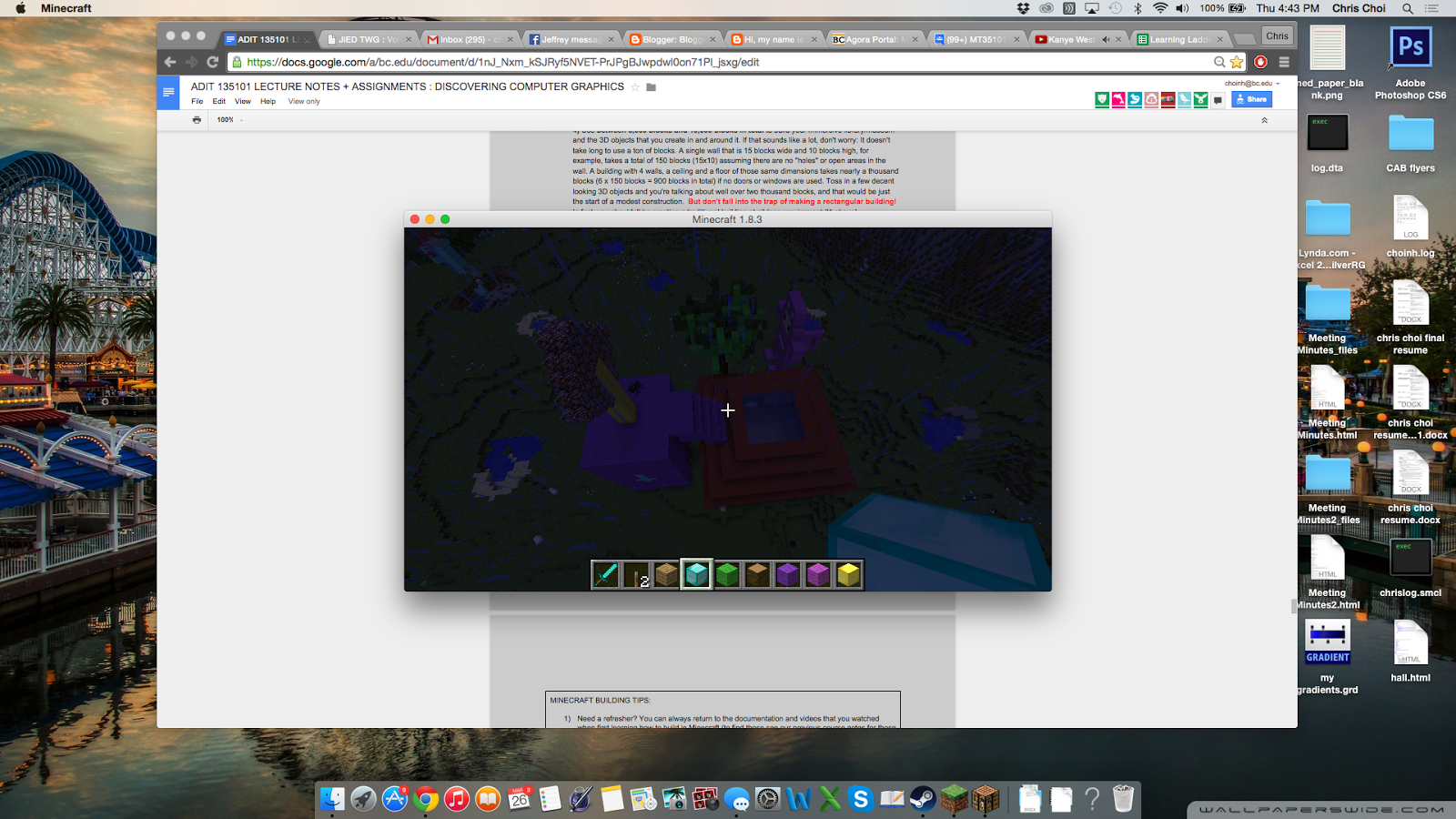This one is Atmospheric Perspective. You can see that in the picture that the further one that is circled does now show that much detail compared to the closer one. That is because distances causes further images to be fuzzy. We can clearly see the detail on the closer building while we can barely make out the other building.
This one is shading and lighting. The light hits hitting the snow, making parts of it darker than others. We can see that it makes it look like different shades of gray and some parts are black because of this. It is creating different gradients of color and makes the white snow actually a lot darker than it is.
This one is linear perspective. In Minecraft, I created a stone road which shows this example. We can see that the lines appear to narrow as they get further away which is known as the vanishing point. However, this is just an illusion and the stones are actually the same.
This one is occlusion. My avatar is standing in front of the wall which tells us the front-to-back order. Because my avatar occludes the building, we can assume that he is in front of it. Another way to tell is by seeing a portion of the wall missing, where my avatar is standing.
This one shows size differences. We can see that the front chair seems to be bigger than the one in the back. This is because objects that are closer to us seem larger than ones that are further. However, they are actually the same size. These size differences show us how far or close an object is to us.
This one is texture density. In this picture, we are relatively close so we can see all the texture on the building. However, if we were to go further away, the tiles on the building would look more and more dense till it would become a big and blue block. The further away you are from an object, the morse dense the patterns look. The closer you are, the less packed it looks.
This was a part of our final where we had to find 6 monocular depth cues in a virtual reality world and identify them. It is a final exercise from the Immersive Education course that I am taking at Boston College. The course is called Discovering Computer Graphics. For details, visit the immersive BC portal at http://immersiveeducation.org/@/bc

























































